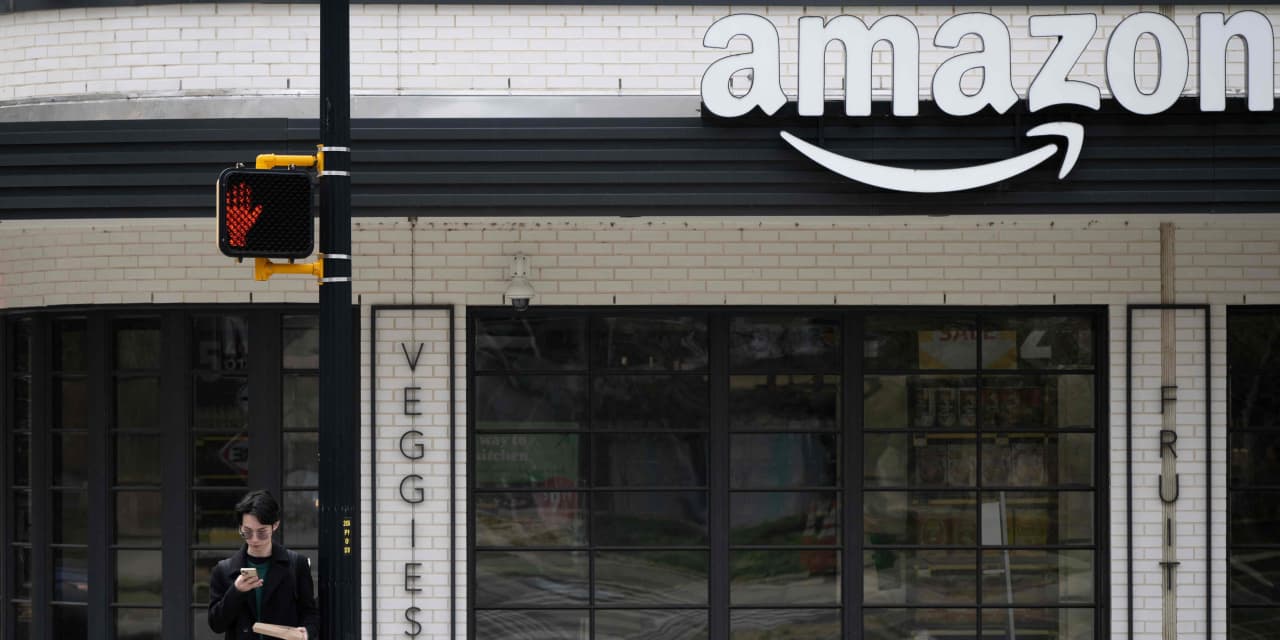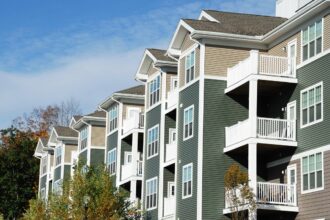Seattle-based Amazon’s announcement that it would be building a second headquarters in Northern Virginia boosted home prices and sales, albeit temporarily, according to a new report.
The finding is based on an analysis by Bright MLS, a real-estate database company. In “Five Years Later: Amazon’s Impact on the Local Housing Market,” Bright MLS analyzed closed sales and price trends and trends in for-sale listing descriptions in the greater Washington, D.C., region over an 18-month period.
The authors found that after Amazon
AMZN,
announced that it was building its secondary headquarters, dubbed HQ2 during an exhaustive and high-stakes search process, in Arlington, Va., in November 2018, home prices rose faster and houses sold faster in Arlington than in neighboring areas.
From the archives (January 2018): Amazon.com’s ‘HQ2’ finalists include New York, Chicago, L.A., Atlanta, Boston, Dallas, Washington
Also read (January 2018): Don’t count out Toronto — with health care and a deep immigration pool — in Amazon’s HQ2 hunt
And see (March 2018): Chicago — with a lift from O’Hare’s planned revamp — again named best corporate relocation target
“The announcement itself did prompt a spike in real-estate values,” Lisa Sturtevant, chief economist at Bright MLS, told MarketWatch. “But it was pretty short-lived.”
The Bright MLS report answers some of the questions that arose when Seattle-based Amazon first selected Arlington for its second corporate campus.
The news immediately stirred predictions that housing prices would shoot up as a result of the tech giant’s presence, especially because Amazon said it would ultimately create 25,000 jobs with an average salary of $150,000.
The report shows that Amazon had an effect on local real estate, but not necessarily a lasting one.
From the archives (November 2018): Why Amazon’s ‘HQ2s’ won’t create two more Seattles
Also read (April 2018): Winning Amazon’s HQ2 would hurt these cities most — at least by this measure
“Amazon HQ2 did have a transitory impact on the housing market and did give home prices a shot in the arm,” the report stated.
Amazon pushed back on the main findings of the report.
“As this report and extensive previous research has shown, lack of supply is the continued driving force behind increasing home prices across the region — not companies investing and creating jobs here,” Zach Goldsztejn, an Amazon spokesperson, told MarketWatch.
“Addressing housing affordability requires public-private entities and nonprofits working together. Since 2021 we’ve invested over $1 billion to create and preserve over 7,500 affordable homes in the D.C. region. Our investments increased the supply of long-term, affordable rental stock in Arlington by 22% in 2021 alone,” he added. “We look forward to continuing to engage to deliver results in this space.”
Capitol Report (February 2019): Here’s what would have made Virginia walk away from an Amazon HQ2 deal
Home prices rose 17% in the ‘National Landing’ market
Prices of single-family homes rose by an average of 17% in the “National Landing” market — which comprises ZIP Codes 22202 in Arlington and 22305 in Alexandria — between the last quarter of 2018 when HQ2 was announced and the first quarter of 2020, Bright MLS found.
But home prices were only up by 10% nationwide over the same time period.
A separate 2019 report by Realtor.com found that home prices had risen 17.3% in the six months after Amazon’s announcement. That was considerably higher than the increase in the national median list price during that time, which was 5.5%.
“Housing demand picked up in Arlington, Va., after the announcement of HQ2,” Hannah Jones, senior economic analyst at Realtor.com, told MarketWatch.
Don’t miss (November 2018): Amazon executive lectures presumed ‘HQ2’ leaker in Virginia suburb
From the archives (November 2018): What Amazon’s HQ2 will mean for house prices
She noted that demand for midpriced homes, listed at between $300,000 and $750,000 in particular, increased, which meant that buyers were finding fewer affordable homes for sale in the immediate aftermath of the HQ2 announcement.
“Home sales picked up directly after the announcement,” Jones added, “but limited affordable inventory stifled sales growth. Sale prices climbed over the year following the announcement.”
In October 2018, prior to the HQ2 announcement, the typical sales price of a home in Arlington was $591,000. A year later, that had climbed to $653,000.
Today, the median-priced single-family home in Arlington is $761,000, according to Realtor.com.
(Realtor.com is operated by News Corp subsidiary Move Inc., and MarketWatch publisher Dow Jones is also a subsidiary of News Corp.)
Real-estate agents used HQ2 as a marketing tool
The pace of sales also picked up after the HQ2 announcement.
In December 2018, the ratio of pending home sales to new property listings was 1.34 for condominium units in Arlington, the Bright MLS report found, “indicating unusually high buyer interest.”
Pending sales also exceeded new listings for town houses and attached homes.
The pending-to-new-listing ratio is considered by some to be an indicator of how “hot” a real-estate market is. The ratio tracks the balance between the number of properties going into contract and the number of new listings coming on line. In a hot market, there may be few new listings and a rise in homes going into contract due to rising demand from home buyers.
But the dynamics of those Virginia housing markets — and everywhere else — quickly shifted due to the onset of the coronavirus pandemic. During the pandemic, many took advantage of ultralow mortgage rates to purchase homes, boosting demand.
“The market sort of returned to being driven by those primary fundamentals of demand and supply” and the Amazon effect faded, Sturtevant, a former Arlington resident herself, said.
Nevertheless, prior to the pandemic, the impact was clear, as home sales appeared to be directly driven by the HQ2 announcement. For instance, real-estate agents began using HQ2 as a “marketing tool,” Bright MLS found, with two out of five single-family homes listed in 2019 in the ZIP Code 22202 — the area that includes HQ2 — explicitly mentioning HQ2 in the property descriptions.
Concerns over HQ2 now replaced by worsening housing affordability overall
Even though she can’t rule out mom-and-pop investors and home flippers, Sturtevant noted that there was insufficient evidence to show that large-scale investors swept in and bought a significant number of homes following Amazon’s announcement.
When news broke that Amazon would be coming to Northern Virginia, there was concern over whether the market would see an influx of Amazon employees and, with their six-figure annual compensation, crowd out less-affluent local buyers, Sturtevant said.
At the time of the announcement, harsh criticism was leveled against the company by affordable-housing advocates who worried that the project would exacerbate the struggles of existing residents in finding a place to live. Amazon had said HQ2 would result in 25,000 jobs over the next decade, plus thousands more indirectly, across the D.C. region.
“The concern was that these folks were going to drive up prices and rent because they were coming in with higher wages. The fact of the matter is, even though 25,000 new employees were projected, even now only 8,000 employees have been hired, and because of remote work, there’s still relatively few in the office every single day,” Sturtevant noted.
The scope of HQ2 has changed since Amazon announced it. Amazon paused construction of some buildings at HQ2, the company said in March of this year, as part of a broader effort to slow its pace of growth. It cut thousands of jobs at the start of the year to reduce costs.
Moreover, with housing affordability at its lowest level since 1984, home buyers are facing fundamental problems of low inventory and high borrowing costs, with mortgage rates at a 23-year high.
The bottom line is that, while Arlington still felt an “Amazon effect” from the HQ2 announcement, the tech company wasn’t ultimately responsible for the sharp run-up in home prices in the last five years, Sturtevant said.
Don’t miss (March 2023): Tech is thriving in D.C.’s backyard — despite lawmakers’ efforts to rein in the industry
“There were fears that Amazon was going to make Arlington and the surrounding areas unaffordable,” Sturtevant said. “But those [neighboring] markets were already [expensive] prior to Amazon. So it’s a little bit of a chicken-and-egg problem.”
“And so,” she added, “while the announcement had a short-term impact, it certainly isn’t the reason [that] home prices are as expensive as they are in the county.”
Opinion (November 2018): This is what cities that lost out for Amazon HQ2 need to do next
Read on (October 2018): New York said to woo Amazon: Bring HQ2 and we’ll rename a toxic creek after you
Read the full article here










